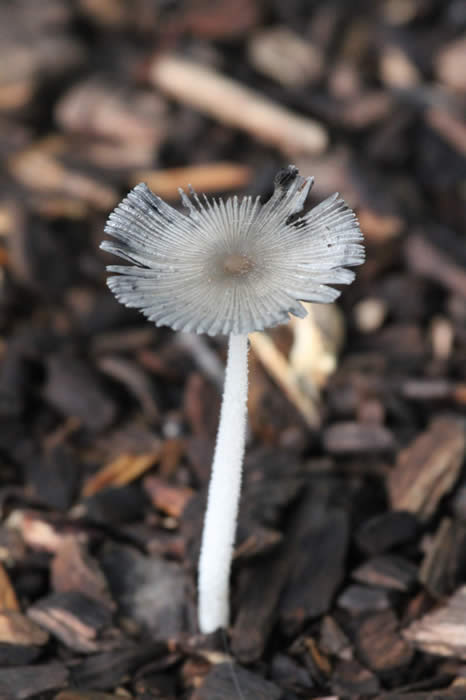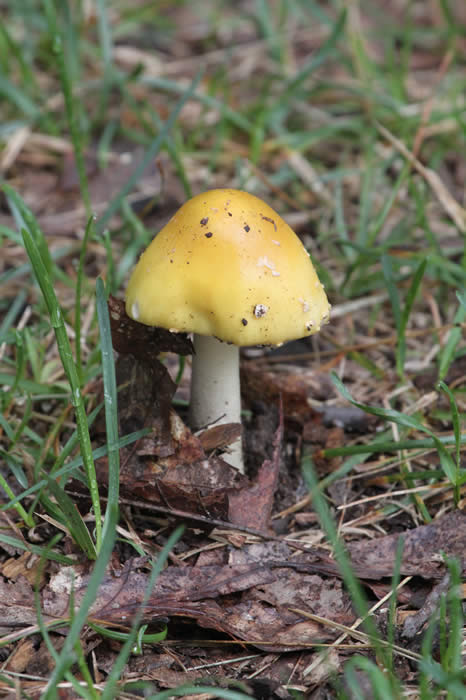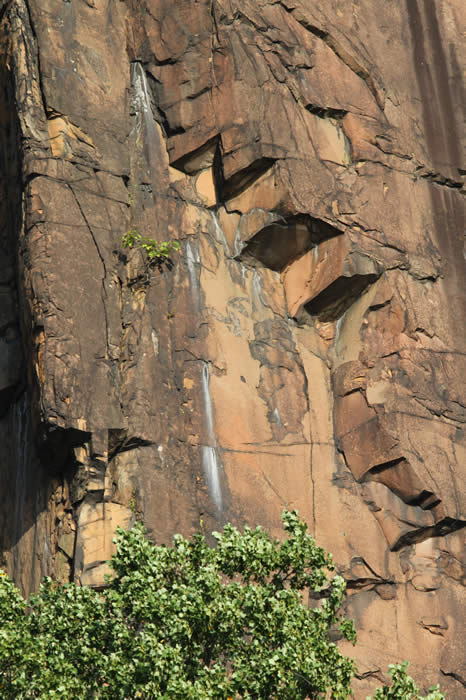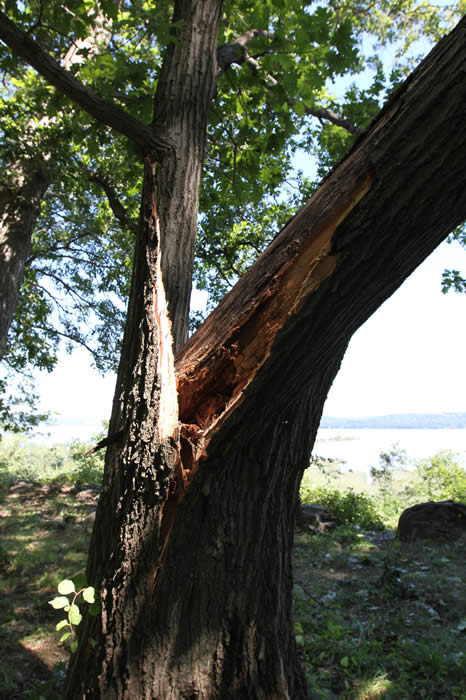The Hudson River Diaries A Compendium of Poetry and Natural History Gleaned from observations in and around Sparkill, New York |
August 2011 |
Black swallowtail My friend Douglas encountered this particular swallowtail on August 4 while he was mowing the lawn next to the Sparkkill in Piermont. also known as the American swallowtail, this common butterfly had pupated and was hatching on a fennel plant. |
 |
Another shot of the swallowtail. the diffused color in the background was provided by two canoes, extremely out of focus because of the use of a telephoto lens. |
This burdock plant in Tallman State Park (featured in earlier diary entries) was the host to this spectacular insect which I'm not able to identify. Even in a locale as well traveled and inhabited as this one, there are literally thousands of species of insects, few of which have been studied in any great detail by specialists. Each one has its own extraordinary and unique story, and all of them are important to the ecosystems we live in. |
 |
A more detailed shot of the bug. Possibly a longhorn beetle. |
 |
Frost's Bolete August is the beginning of mushroom season–they really start popping up about now. This spectacular specimen, found on August 18 on the hillside leading up to the picnic ground at the north end of Tallman State Park, was photographed in early morning sunlight. The species occurs up and down the East Coast; it is considered edible, although readers should be reminded NEVER to eat mushrooms from the wild unless you are able to professionally identify them! |
King Bolete Considered to be one of the best edible mushrooms around, this mushroom is called the Steinpilz, or stone mushroom, by the Germans, probably because it can resemble a rock. This specimen was also found at Tallman State Park on August 18, although further up on top of the hill, near the picnic grounds. An abundant bloom of these mushrooms was on that day. |
A side view of the King Bolete, showing the distinctive spongy tube layer which carries the spores. Boletes are easily distinguished from gilled mushrooms because of this feature. |
 |
This mushroom is likely to be in the genus Mycena (Mycena subcaerulea.) Many dozens of these small, delicate and almost certainly inedible mushrooms emerged mid-August. |
 |
I could not identify this little beauty with any certainty. |
Reddening lepiota A lepiota, without any doubt, but the question is what kind. Based on what I have seen at Tallman State Park in the past, I suspect that this is a reddening lepiota (Lepiota americana) but at least one of the varieties of lepiota is poisonous, so why take chances? Don't eat it! |
Also possibly lepiota. |
Unidentified, these mushrooms are past their prime, but they make a lovely arrangement as they curl up. |
These lovely, delicate, parasol type mushrooms in the grass were drenched with morning dew when I found them at about 7 AM. The form is not distinct enough for me to make any confident identification without research that I did not engage in. In general, one has to do destructive things to mushrooms to identify them – that is, pick them, take spore prints, and so on. My general rule is to not touch or alter anything I see or photograph unless it happens to be an edible mushroom I'm sure that I am going to pick and eat. If mushrooms are particularly abundant, I might make an exception to this rule, but by and large, as I pass through the wilderness, hands off is the rule. |
Basalt We are not quite done with mushrooms yet, but I thought it was time for a little relief. This particular piece of diabase basalt–the rock that the Palisades are made of–is on the way up the hill to the Tallman State Park picnic ground. I photographed it in early morning just as the sun was coming over the east side of the Hudson River. Basalt is pretty boring stuff; it's hard to find a way to photograph it close up that does it any favors. I felt that this picture was an exception. |
A view of the Palisades from the river, looking north and west. Debris from collapses of the cliff face can be seen along the river bed.The Hudson River is actually a glacial fjord, if you can imagine that–the riverbed is actually some 900 feet deep, but 800 feet of it is filled with glacial debris and outwash from the northern part of the river valley. The Palisades formed about two hundred million years ago when magma erupted up through sandstone formations from the age of dinosaurs, spreading out over them and covering them. There are places where one can see the diabase covering the Newark basin sandstones. Newark basin sandstones–not pictured here – are rich in dinosaur footprints, and probably have plenty of dinosaur fossils in them, if enough exploration were done. I have collected small marine fossils from the Newark basin sandstones myself from road cuts along I87. |
 |
Palisades basalt tends to split along straight lines. It creates intriguing formations, such as this Escheresque upside down staircase. |
This huge boulder–easily the size of a small truck–split off the Palisades whole, and made it all the way down to the river (a considerable distance!) before it broke in half. |
This handsome white tailed deer was photographed in Tallman State Park one morning in mid-August. |
American Eel This handsome but hapless specimen of the American eel, nearly 2 feet long, was caught in the Hudson River on the Piermont pier by an eight or nine-year-old on August 22. The eel was over the legal limit (fishermen are required to throw eels over 14 inches back, because larger eels are closer to breeding age.) Unfortunately, an uneducated brute of a man who wanted to show everyone how tough he was hacked up the eel with a hatchet to use as crab bait before anyone could stop him. Shame, shame, shame. if you don't know what the conservation laws are, you shouldn't be fishing. |
 |
Black Racer Since we are on the subject of snakelike creatures, this handsome black racer was found near the marsh in Tallman State Park in late August. Shown with the author, this snake was as much as 5 feet long, and emitted a powerful musky odor from its cloaca when captured. The snake also rattles its tail like a rattlesnake if threatened. He bit me several times; the teeth are tiny, capable of drawing blood, but not much more. |
In case you don't believe this snake can rattle its tail like a rattlesnake, watch the video. |
Swamp Rose Mallow A beautiful native species, which trhives in wetlands. This specimen was growing along the Palisades. |
Gem-studded Puffball I warned you weren't were done with the mushrooms yet! Also known as the Devil's snuff box (a horrible nickname for such a lovely little mushroom) this puffball was found, like all the other mushrooms in the diary, in Tallman State Park. It is considered to be an excellent eating mushroom. Reminder: don't eat wild mushrooms! |
Another picture of this very appealing puffball mushroom. |
 |
The reflection of a red canoe located out of sight on the bank above this great blue heron created a serendipitous effect, giving us what looks like a lovely Oriental painting. |
Hurricane Irene struck us a glancing, but from the point of view of flooding, brutal blow on August 28. This is a picture of my wife Neal and the famous dog Isabel. Isabel is a sharpei who hates water, but she bravely swam with us everywhere we went that day. Here, one is looking back towards the mouth of the creek, with the Hudson river behind the viewer. |
Flooding over the road along the Sparkill. Houses next to the creek were damaged by the flooding. Pictures were taken at high tide, at the height of the storm. |
The road crossing the river into Piermont had over two feet of water on it. The building framed by the bridge superstructure is the Piermont Post office- seriously flooded. |
Another view |
We could not go beyond this point, because water got too deep to walk in safely. Ultimately it crested about 4 feet above mean high tide. |
The pumping station next to the river on the way out to the Piermont pier blew its gasket during the storm, resulting in this surreal modernist sculpture, an accident of public utility failure. |
After the storm, cormorants and other birds were doing everything they could to dry out after twelve hours of unrelenting rain. |
Everyone was in on the action. |
Much preening of feathers was required! |
Semipalmated Sandpiper Flocks of these plucky little birds were picking through the debris from the hurricane all over the pier. |
Common Tern A number of terns–not a common sight around the Piermont pier, actually–were also in evidence on the remains of the old pier. |
 |
A single large oak tree in the picnic grounds atop the Palisades fell victim to the storm. |
Yellowjackets To my surprise, when I neared the tree, I discovered a swarm of yellow jackets (a form of hornet, not bees) were gathering wood fiber to use as pulp for their paper nest. Yellow jackets are extremely aggressive hornets, so I backed away quickly. |
By this time the phragmites in the salt marsh is a rich purple, and heavy with seed. |
This relatively small snapping turtle was lurking in the marsh. |
|
|
This large snapping turtle was the victim of a hit and run on the River Road between Piermont and Nyack. We rescued her and put her on the banks of the Sparkill Creek, where, we reasoned, she would have a better chance of survival and recovery. |
Crabapples are in season! This particular variety is actually rather tasty. Crabapples are not actually apples: they're in the rose family, which is why their fruit looks like rose hips. |
A cormorant takes flight near the end of the Piermont pier. |
|